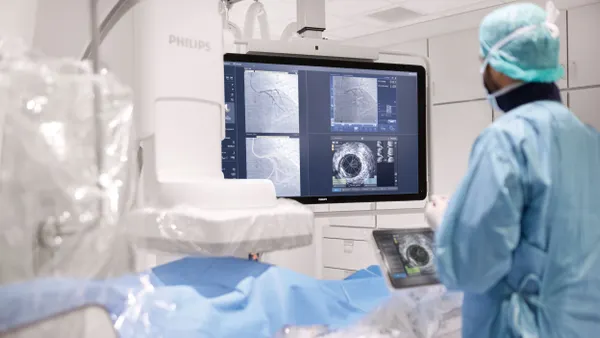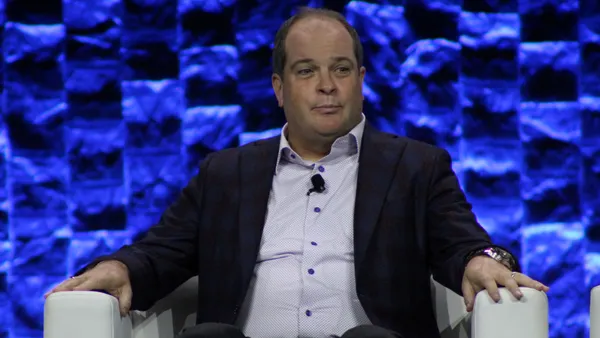Dive Brief:
- Shockwave Medical has received FDA’s breakthrough designation for its device that uses pulsating sonic waves to fracture heavily calcified plaque in coronary arteries, the company announced Tuesday.
- The technology is an adaptation of lithotripsy, a technique used in treating kidney stones, for the cardiovascular field. The aim is to ease stent deployment and expansion to improve blood flow to the heart.
- Santa Clara, California-based Shockwave is in the process of enrolling patients in an Investigational Device Exemption study for the device called DISRUPT CAD III.
Dive Insight:
Shockwave, which counts heart pump maker Abiomed among its investors, raised $111.4 million in its initial public offering in March. Abiomed invested $10 million in a concurrent private placement, on top of a $15 million investment in December, when the companies also announced they would collaborate on a physician training program in the U.S. and Germany.
Shockwave is led by industry veteran Doug Godshall, the former CEO of HeartWare, which was acquired by Medtronic in August 2016.
The company's C2 IVL Catheter is based on principles similar to urologic lithotripsy, a treatment that has been used for more than 30 years to break kidney stones into small pieces that can then pass from the body naturally.
The system is designed to deliver short bursts of sonic pressure waves through the artery wall to break up hardened plaques without harming the soft tissue. A catheter balloon is advanced to the calcified lesion and then inflated with fluid. The device creates a small bubble within the balloon that expands and collapses to generate the sonic waves that travel through the vessel and crack the calcium. After the calcium has been fractured, the balloon can be expanded and angioplasty performed.
Shockwave C2 catheters are approved in Europe to treat de novo coronary artery disease. The company also sells its M5 Peripheral IVL catheter to treat peripheral artery disease, including iliac arteries, in the United States and Europe.
Shockwave last month reported second-quarter revenue of $10 million, representing a threefold increase over the year-ago quarter. The company also announced the doubling of its production capacity with the move of its production facilities to Santa Clara and provided an update on its pivotal trial for the C2 system, noting enrollment in the DISRUPT CAD III study had reached 100 patients.
The study, which is expected to enroll a total of about 392 patients at 50 sites in the U.S. and Europe, will assess freedom from major adverse cardiac events (MACE) within 30 days of the procedure as the primary safety endpoint. The primary effectiveness endpoint is procedural success, defined as stent delivery with a residual stenosis of less than 50% and without in-hospital MACE.











